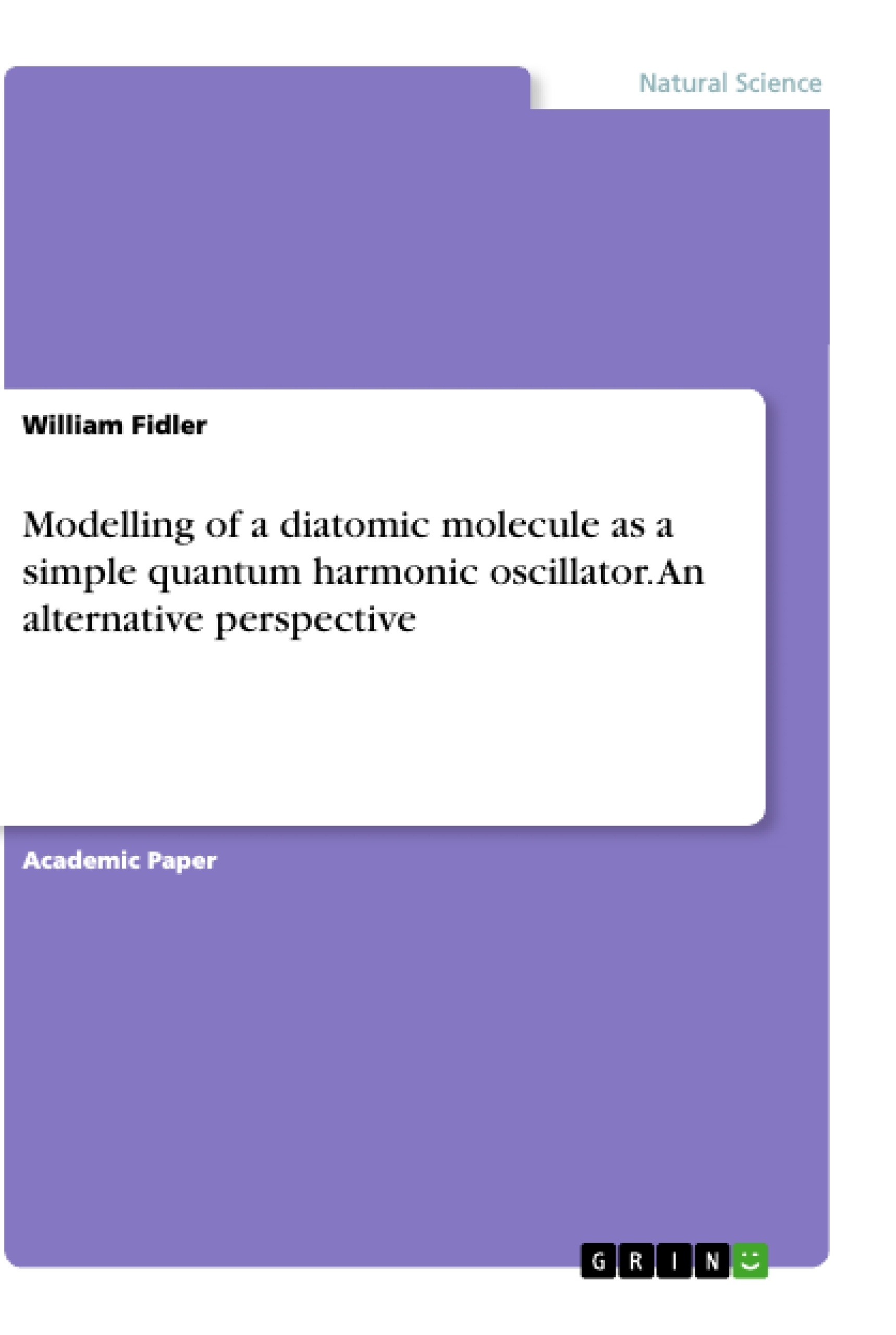In this paper, a diatomic molecule is modelled as a simple quantum harmonic oscillator. The conventional solution of the Time-Independent Schrödinger equation (TISE) yields the wave function as the product of a Gaussian and Hermite polynomials.
It is argued that the limits set for the vanishing of the wave function in the conventional solution are inappropriate for the modelling of a diatomic molecule by such an oscillator; instead, we posit that the wave function vanishes at the limits of the excursions of the mass centres of the atoms from their equilibrium positions. It is shown that the energy eigenstates for the model developed here are given by: E = hv[ 1 + (n pi/4)^2], where the symbols have their usual connotation.
Inhaltsverzeichnis (Table of Contents)
- Abstract
- Introduction
- The simple quantum harmonic oscillator
- The wave function, Schrödinger's equation and solutions thereto
- The 'alternative' quantum harmonic oscillator
- The Born Rule
- The wave functions and energy eigenstates
- Specimen calculations
- Discussion
- References
Zielsetzung und Themenschwerpunkte (Objectives and Key Themes)
This work aims to provide an alternative perspective on the modeling of a diatomic molecule as a simple quantum harmonic oscillator. It challenges the conventional solution of the Time-Independent Schrödinger equation (TISE) and proposes a new model based on the physical limitations of the system. The work presents a novel solution for the energy eigenstates of the oscillator, including a discussion of the ground state and its implications.
- Quantum harmonic oscillator modeling of diatomic molecules
- Limitations of the conventional solution to the Time-Independent Schrödinger equation
- Alternative model for the diatomic molecule as a quantum harmonic oscillator
- Energy eigenstates of the alternative model
- Implications of the alternative model for the ground state of the molecule
Zusammenfassung der Kapitel (Chapter Summaries)
- Introduction: This chapter sets the context for the work by discussing the limitations of the conventional quantum harmonic oscillator model for diatomic molecules and introduces the need for an alternative approach.
- The simple quantum harmonic oscillator: This chapter provides a basic analysis of the classical harmonic oscillator, highlighting the limitations and assumptions inherent in applying this model to quantum systems.
- The wave function, Schrödinger's equation and solutions thereto: This chapter delves into the derivation of Schrödinger's wave function and its application to the quantum harmonic oscillator, exploring the inherent assumptions and limitations associated with the conventional approach.
- The 'alternative' quantum harmonic oscillator: This chapter introduces an alternative model for the diatomic molecule as a quantum harmonic oscillator, arguing that the wave function should vanish at the limits of the atomic excursions from their equilibrium positions. This chapter presents a novel approach to the TISE, suggesting a new perspective on the behavior of the wave function.
- The Born Rule: This section discusses the application of the Born rule to the alternative model, examining how probability is interpreted in the context of the wave function.
- The wave functions and energy eigenstates: This chapter presents the wave functions and energy eigenstates for the alternative model. It explores the implications of the new model for the energy levels of the oscillator.
- Specimen calculations: This section provides illustrative calculations and examples to demonstrate the application of the alternative model and its results.
Schlüsselwörter (Keywords)
This work focuses on the modeling of a diatomic molecule as a simple quantum harmonic oscillator. Key concepts include the Time-Independent Schrödinger Equation (TISE), wave function, energy eigenstates, alternative model, ground state, and atomic excursions. This exploration challenges the conventional approach and presents a novel perspective on the behavior of a diatomic molecule within a quantum framework.
- Citar trabajo
- William Fidler (Autor), 2021, Modelling of a diatomic molecule as a simple quantum harmonic oscillator. An alternative perspective, Múnich, GRIN Verlag, https://www.grin.com/document/1146737



